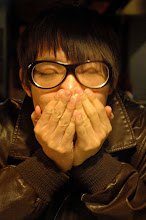

In modern society, due to the fast-paced life and the development of transportation vehicles, people feel and experience the space in a shorter and shorter time. Therefore, people always miss and ignore the space around them, which also ignored by the architects. In this practice, the plastic film, wood and electric fan are adopted to create a channel to increase the space experience of people. The plastic film is formed into a plastic flow space with the wind. When people walk through the space, the bodies are the major mode to experience the space. When the bodies touch the plastic film, the wind force becomes the maximum resistance for people to walk through the space, which will slow down the movement of people to pass the space and increase the existence sense of people to pass the space. In fact, the core of this practice is to establish the relationship between the touch of people’s bodies and the space, thereby stimulating the attention on the space by people.
Hyperespace



The Chapuisat Brothers’ Hyperespace is one of the examples. To celebrate the 20th anniversary of the Neue Kunst Halle in St. Gallen, Switzerland, the Geneva-based Chapuisat artist brothers created a 200 sq.m cardboard burrow in the main hall. In this work, the only visible part of the project was the suspended entrance hole. Once plunged into darkness, visitors are then obliged to prostrate themselves and crawl into a tunnel. They can not turn back and only can get on their knees and clamber, wriggle or squirm through the lair before emerging on the other side. visitors are put to the test both physically and psychologically during their exploration without their visual feelings.
Daheim

Friedrich Von Borries and Tobias Neumann’s Daheim is another example which represents the same principle by creating a playfully lip-shape house to make people use their body to perceive the inner space.
BFD-Bundig Fluchtend Dicht


Franka Hornschemeyer’s BFD-Bundig Fluchtend Dicht shown in Deutscher Bundestag in Berlin in 2001 places the viewer’s relationship with unperceived aspects of space and by her unique and playful method of utilizing building materials. In her work, she confronts us with a new spatial experience that challenges our understanding of architecture.

No comments:
Post a Comment